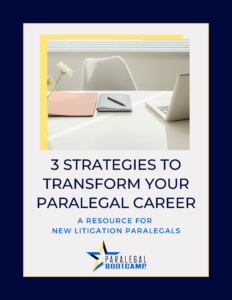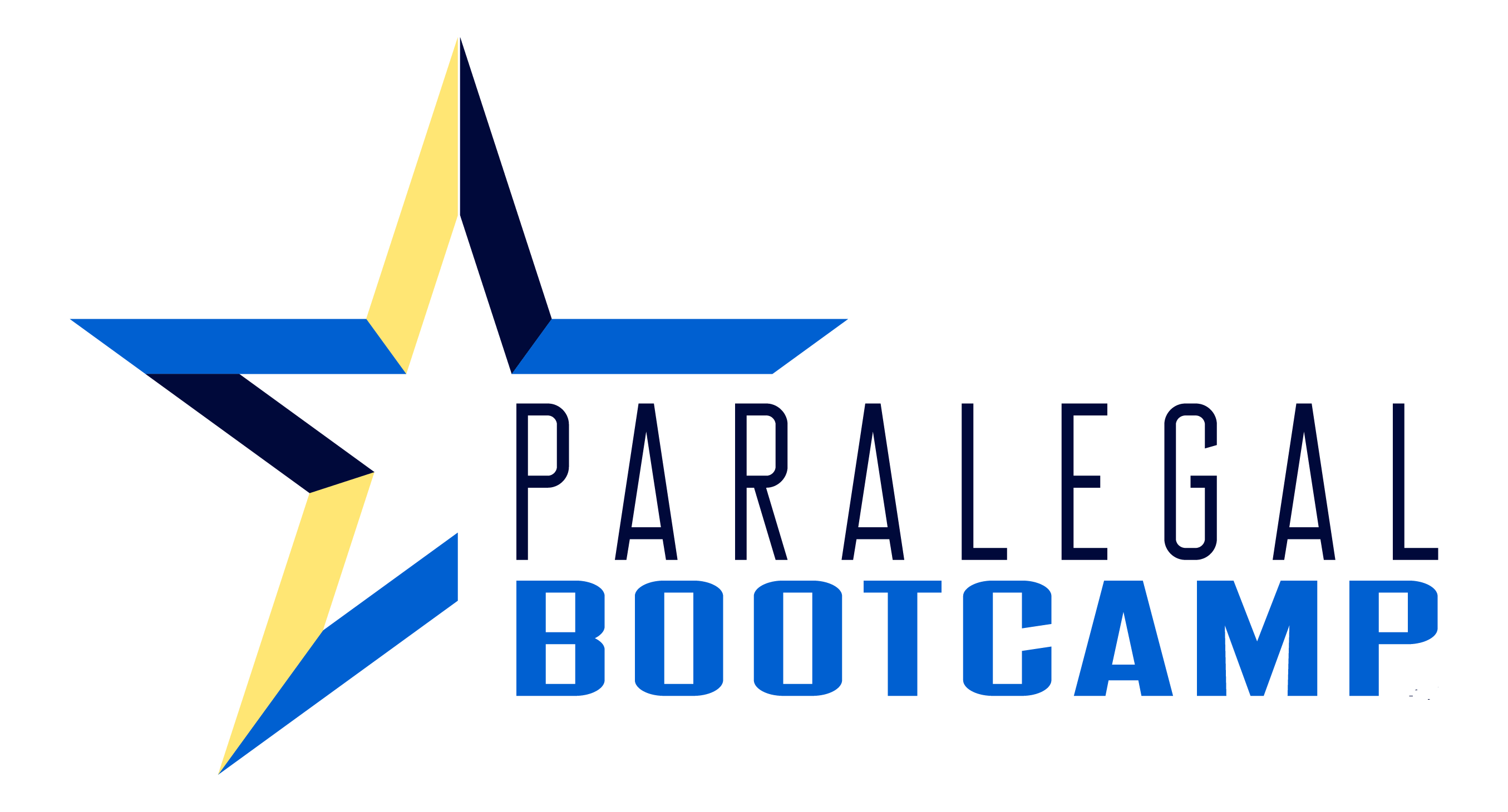4 Quick Paralegal Resume Tips
1: Keep the file name of the resume simple.
Use first name, last name, dot paralegal, dot pdf. That’s it. That’s all you need.
What you don’t want for resume file names are:
🚫 JaneDoe Resume v1
🚫 DoeJ Resume(2) (in other words, the file was copied two times). With the first name missing, it could be more difficult to find you.
🚫 Jane Doe Resume 2023
Make it easy for them to find you when they’re searching for you. It looks like this: Jane.Doe.Paralegal.pdf.
2: Keep the format of the resume simple.
Don’t do the two-column format. Columns don’t always convert correctly. Just do the old-fashioned single column format.
Why?
Many employers have resume-reading software that extracts the information from your resume. Some of those software applications cannot read all of the text when you have columns or borders.
3: Add numbers to your resume.
Hiring managers like to see numbers.
If you’re a litigation paralegal, how many trials have you had?
You’ve got 10 years of litigation experience and in your resume you say that you have “experience assisting at trial.”
Instead of just saying that you’ve been to trial, how big were those trials?
How long were they? Were the trials out of town? How many?
Did you have 10 trials over the last 10 years of your paralegal career? That would be really valuable if I’m a paralegal manager and I’m looking at that and I’m looking for a litigation paralegal for a team that goes to trial often.
If you have been working at a law firm with a big billable hour requirement and you’ve met or exceeded those billable hours every year, put that in your resume.
Let that paralegal manager or hiring manager see something like:
- Exceeded the firm’s 1,700 billable hour requirement consistently every year.
Now, the flip side of that is if you’ve never been to trial, then you wouldn’t put zero trials.
If you barely ever met the firm’s billable hour goal, then you wouldn’t put billable hours in there. And use this for one of those statistics or levels of experience that you’re trying to portray to the potential employer for something good that’s in your resume.

Free Strategy Guidebook for
New Litigation Paralegals
Are you ready to fast-track your litigation paralegal career?!
Our free guidebook reveals three powerful strategies that will set you up for success in your journey. If you’re ready to seize this opportunity and thrive as a litigation paralegal, sign up below, and get started now!
4. The resume length doesn’t matter as much as the content.
I talk about resume length a lot because I like to look at a resume like it’s valuable real estate. What I mean by valuable real estate is the white space on your resume. Unless you have 20 years or plus experience, I think you should be able to keep your resume to one page.
Regardless of the page length, I want you to think of it like page one is beachfront property.
Page two, especially in the middle of page two, that might be like swampland in the Everglades. So make sure that you’re using that valuable real estate, the white space of your resume.
Use it wisely. And then also use action verbs.
So for things that you’re describing that you did, did you streamline something? Did you collaborate? Did you formulate? Did you design? Look up, I’m sure that there’s something on the internet where you can get a list of action verbs and try to incorporate more action verbs in there instead of just, organized client documents.
What did you do? Why were you organizing client documents? Were you streamlining something instead? Were you reviewing them and, you know, extrapolating things from them?
Try to move away from those vague statements like “organized documents” or “drafted legal documents.” Every paralegal does that kind of work. What sets you apart from them?
One bonus one here is don’t repeat what you have done (in bullet points for one position into your next position). That’s the worst. That resume is going to get tossed. If what you did at your previous job is the same exact thing that you’re doing in this job, let’s say you had that job for two or three years, then you went to your next position.
You had that one for two or three years. If it’s got the same thing in there for the bullet points, then somebody’s going to know all you did is copy and paste from the bullet points. But what they’re also going to look and see is that in the last six years, you haven’t grown professionally at all. So make sure that you’re not using the same words and the same types of things in each position.
Remember to update your resume EVERY year, whether you’re searching for a job or not!
Trial Prep Boot Camp
Getting ready for trial is stressful and rewarding at the same time.
What if your next trial didn’t involve 14-hour work days?
We’ll show you to be so prepared for your next trial that you will actually enjoy going to trial…even if you work for the Master of Procrastination!

Meet the Author

Ann Pearson is the Founder of the Paralegal Boot Camp, and host of the Paralegals on Fire! Podcast Show, and passionate about promoting the paralegal profession.
Ann spent 20 years working as a paralegal manager and a litigation paralegal before opening the Paralegal Boot Camp in 2010.
Ann’s training programs focus on adding immediate value to a paralegal’s career and bridging the gap between what a paralegal learns in school and what they actually do on the job.
Visit the About Us Page to learn more about why Ann started the Paralegal Boot Camp.

























